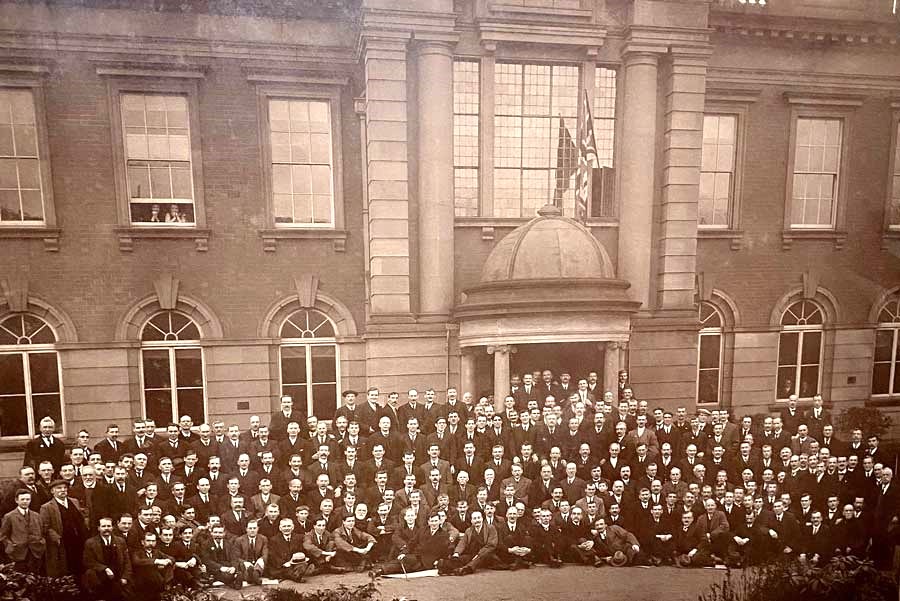Introduction
The Durham Miners’ Association (DMA) archive is a treasure trove of historical records that encapsulate the rich and vibrant history of the mining communities in County Durham. Spanning over 150 years, the archive provides invaluable insights into the lives and struggles of the miners who played a crucial role in shaping Durham’s identity and contributing to national and global events. In this article, we will explore the significance of the DMA archive, its unique collection, and its importance in understanding Durham’s mining heritage.
A Chronicle of Durham’s Identity and Continuing History
The DMA archive is a powerful tool for individuals to connect with their sense of identity and place. By delving into the records, one can trace Durham’s historical journey and gain a deeper understanding of the county’s current landscape. The archive sheds light on the immense contributions made by Durham and its people to national and global events, such as the 1926 General Strike and the international labour relations during the Second World War.
An Extensive and Complete Archive
The DMA archive is a testament to the preeminent trade union in County Durham for over a century. It is a rare and expansive record collection with local, national, and international significance. These records represent the hundreds of thousands of miners who toiled in a dangerous industry, enduring periods of recession, major economic growth, and decline. Durham’s miners played a pivotal role in bolstering the national economy, and their stories are immortalised within the archive.

The Influence of the Durham Miners’ Association
The DMA’s influence in the history of industrial relations cannot be overstated. With great political influence and charismatic leaders, the DMA emerged as the second-largest trade union in the UK during the late nineteenth century. Its governance structure, led by the Council and the Executive Committee, ensured effective representation of the miners’ interests. The DMA’s agents, elected by the membership, negotiated with employers and handled various aspects of the union’s operations.
The Structure of the Durham Miners’ Association
The DMA was governed by the Council, consisting of permanent officials and delegates from each lodge. The Executive Committee dealt with matters arising between Council meetings. The union had full-time officials, including the president, treasurer, secretary, and others, responsible for negotiations with employers. The number of agents increased over the years, reflecting the growing needs of the union and its members.
Lodge Structure and Local Contributions
Each lodge or branch of the DMA had a president, secretary, treasurer, delegate to the Council, and an elected committee. Lodges collected national and district contributions from union members. Most of the funds were sent to Redhills, the DMA headquarters, while the locally retained funds were utilised for local, weigh, and political purposes, as well as for schemes benefiting aged miners and hospitals/infirmaries.
The Significance of the DMA Archive
The DMA archive, created by the union and its affiliated lodges, holds immense importance for the history of the labour movement and the coal mining industry. It is a comprehensive collection that spans three separate locations: Redhills, the DMA headquarters in Durham city (currently closed for renovation and when it reopens, the process of transferring the archives to The Story will begin); Durham County Record Office (DCRO); and the North East England Mining Archive and Research Centre (NEEMARC) at the Murray Library, University of Sunderland.
Records at Durham County Records Office
Durham County Records Office houses a significant portion of the DMA archive. The records deposited between 1971 and 1975, Sam Watson papers deposited in 1976, and records deposited in 1993 form the main groups. Several smaller deposits of lodge records were received in the early 1980s. These holdings, comprising volumes and boxes, provide a wealth of information for researchers and enthusiasts. The archives are currently in the process of being transferred from County Hall in Durham to The Story at Mount Oswald, therefore physical copies cannot be viewed but records maybe online here (currently at time of publication October 2023)
The Mining Durham’s Hidden Depths Project
The initial cataloguing of the DMA archives was reassessed in 2009-10 as part of the ‘Mining Durham’s Hidden Depths’ volunteer project. This project, supported by the government’s Learning Revolution Transformation Fund, involved a team of archivists who enhanced access to the collection. The Mining Durham’s Hidden Depths database, created by dedicated volunteers, offers an online search for mining ancestors who worked in the Durham coalfield. Information relating to the new DMA headquarters opened in 1915 has been added to the Durham at War website with additional material contributed by volunteers.
NEEMARC: Preserving Mining History
NEEMARC, established through a HLF-funded project in 2004, transferred records from Redhills to create a mining archive research center. The NEEMARC collection encompasses the National union of Mineworkers Durham Area (NUMDA) records, the North of England Institute of Mining and Mechanical Engineers (NEIMME) records, and the Durham branch of the National Association of Colliery Overmen, Deputies, and Shotfirers (NACODS) records. This consolidation ensures the preservation and accessibility of mining history.
Durham Mining Museum
Durham Mining Museum is a comprehensive website resource packed full of interesting mining history in the Northern part of England i.e. County Durham (DUR), Northumberland (NBL), Cumberland (CUL), Westmorland (WES) and the Ironstone mines of North Yorkshire (NRY). Durham Mining Museum also host some of monthly circular’s which were made available to NEEMAC which you can access here
Books
Books published relating to the history of the Durham Miners Association include:
R. Fynes, The Miners of Northumberland and Durham (1873)
J. Wilson, A History of the Durham Miners’ Association 1870-1904 (1907)
S. Webb, The Story of the Durham Miners: 1662-1921 (1921)
W.R. Garside, The Durham Miners 1919-1960 (1972)
Conclusion
The Durham Miners’ Association Archive stands as a testament to Durham’s mining communities’ endurance, struggles, and contributions. This extensive and unique collection provides a window into the past, enabling individuals to connect with their history, sense of place, and identity. The DMA archive is a valuable resource for researchers, historians, and anyone interested in exploring the rich heritage of the mining industry. Through the preservation and accessibility of these records, the DMA archive ensures that Durham’s mining history will continue to be celebrated and remembered for generations. While we endeavour to get all of the archives available to the public, we hope this provides a comprehensive overview of signposting to Durham County Records Office online platforms, NEEMARC and general information available through Durham Mining Museum.

